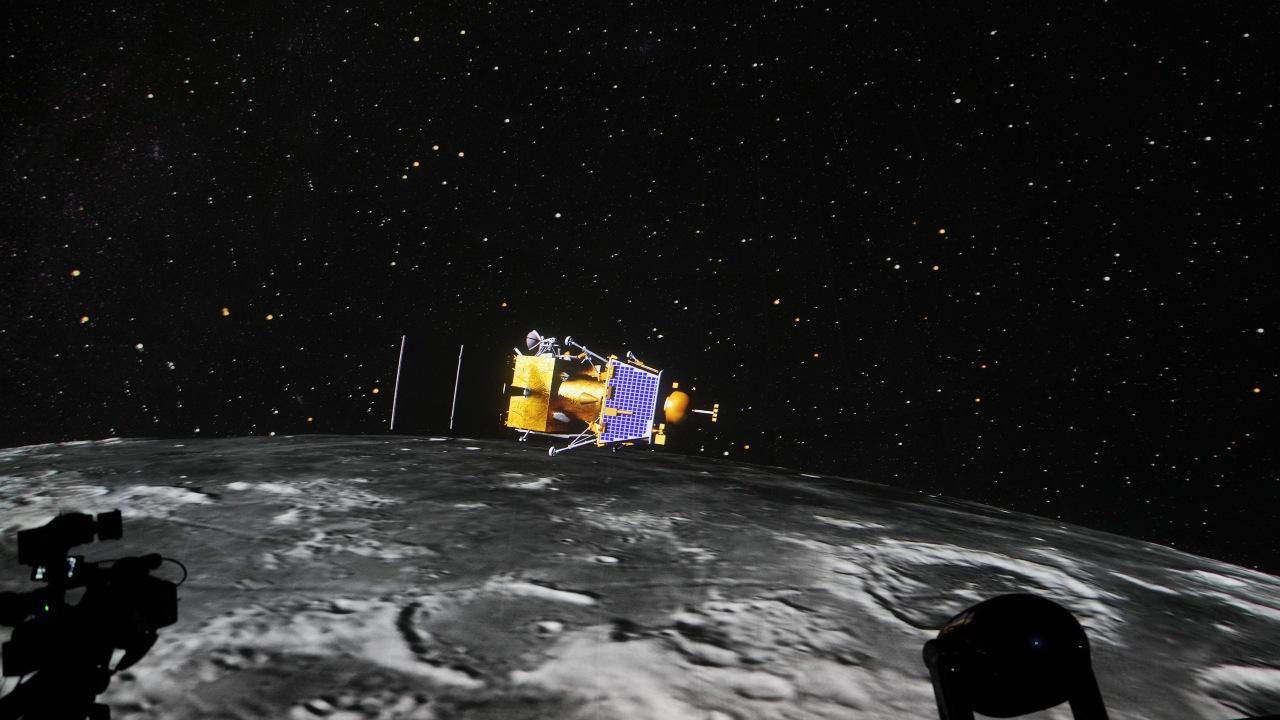Chandrayaan-3: India's ambitious lunar landing endeavor aims for historic success

A still from the short film 'Chandrayaan 2', shown at the Nehru Planetarium, in New Delhi, Wednesday, Aug. 3, 2023. PTI Photo
"India boasts a significant heritage in the space domain, thanks to our scientific community," Prime Minister Narendra Modi said after the launch of Chandrayaan-3 to the moon. He added, "This extraordinary undertaking will bear the aspirations and ambitions of our nation."
ADVERTISEMENT
India's objective is to become the fourth nation to successfully accomplish a lunar landing, following the footsteps of the United States, the Soviet Union, and China. Moreover, India seeks to achieve this milestone in the unexplored South Pole region of the moon."
Here's a breakdown of the key details about Chandrayaan-3:
The Chandrayaan-3 landing module is anticipated to touch down on the moon's surface at 8:34 a.m. Eastern time on Wednesday (6:04 p.m. in India).
Presently, the lander is in an elliptical orbit around the moon, coming as close as roughly 15 miles above the lunar surface. At approximately 8:14 a.m. Eastern time on Wednesday, the spacecraft will ignite its engines to exit its orbit and commence a descent towards the surface. The engines will also help control its descent for a gentle landing.
The Indian Space Research Organization (ISRO), responsible for the nation's space program, will offer a live broadcast from the mission control room in Bengaluru. The live stream will be available on ISRO's YouTube channel and website, starting at 7:50 a.m. Eastern time.
The term "Chandrayaan" translates to "moon craft" in Hindi. Aside from the propulsion module that placed the spacecraft in lunar orbit, the landing module comprises the Vikram lander and the Pragyan rover, both aimed at landing in the moon's south polar region. This is an unmanned mission; no astronauts are on board.
The chosen landing date of August 23 aligns with the sunrise at the landing site. The mission is set to conclude two weeks later, coinciding with sunset. While on the moon's surface, the solar-powered lander and rover will employ various instruments to conduct measurements related to thermal, seismic, and mineralogical aspects.
Here are other details of the landing attempt:
- India's Chandrayaan-3 is an uncrewed lunar exploration mission aimed at achieving a successful landing on the moon's surface.
- The mission follows India's previous attempt, Chandrayaan-2, which ended in a crash almost four years ago.
- The landing is significant because it targets an area of the moon's southern pole that hasn't been explored before.
- The landing module consists of the Vikram lander and the Pragyan rover, both of which are designed for exploring the moon's south polar region.
- Chandrayaan-3's success takes on added importance due to a recent failed lunar landing attempt by Russia's Luna-25 mission.
- India's space program is a source of national pride and reflects the country's ambitions as a rising geopolitical power.
- The mission's success would make India the fourth country to achieve a moon landing, after the United States, Soviet Union, and China.
- India's space exploration efforts align with its diplomatic push for a leadership role on the global stage, and successful missions bolster its image as a technological powerhouse.
 Subscribe today by clicking the link and stay updated with the latest news!" Click here!
Subscribe today by clicking the link and stay updated with the latest news!" Click here!







